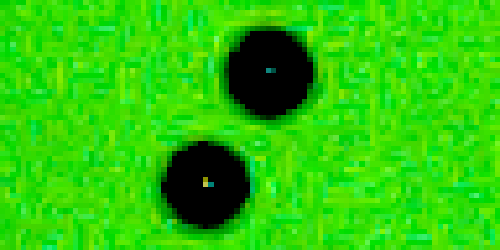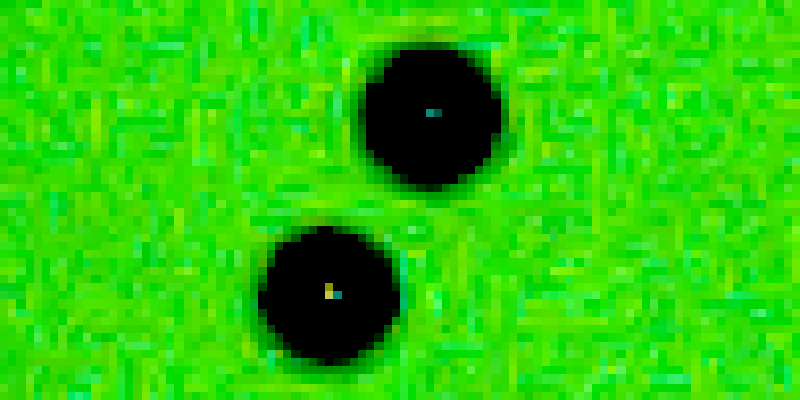Video—Juggling Droplets
A pair of tiny droplets of glycerol in an optical trap can interact with each other and with the trap’s laser beam to produce a sort of “juggling” pattern, as observed by a trio of physicists. The 30-micrometer-diameter droplets follow side-by-side, kidney-shaped orbits that lie within a single plane. Kelken Chang of the University of Gothenburg, Sweden, and his colleagues discovered the phenomenon by accident and combined experiments with simulations to explain it.
The laser beam points upward and is most intense along the vertical center line. The beam acts in two ways, with a force that pushes up on the droplets against gravity and a refraction-based force that pulls them toward regions of higher intensity. When one droplet is above the other, the upper droplet becomes partially eclipsed by its lower partner and falls from lack of light to hold it up. But as the droplet falls, it also gets drawn away from the center line by the more intense light at the edge of the lower droplet’s shadow. Meanwhile, the lower droplet rises and is pulled toward the center line by the unblocked laser beam. The two droplets eventually switch roles. The juggling oscillation occurs at a frequency of about 34 Hz and can last for up to a half hour.
Chang says that the long-time stability of the juggling is in part a result of the team’s precise control of the droplet sizes, thanks to a precision nozzle that creates them, which allows the droplet pair to be nearly identical. As for the usefulness of the experiment, Chang is blunt: “There is no importance whatsoever to light juggling,” he says. “It was a joy making this serendipitous discovery, being puzzled by it, and finally finding a simple solution to it.”
This research is published in Physical Review Letters.
–David Ehrenstein
David Ehrenstein is a Senior Editor for Physics Magazine.





